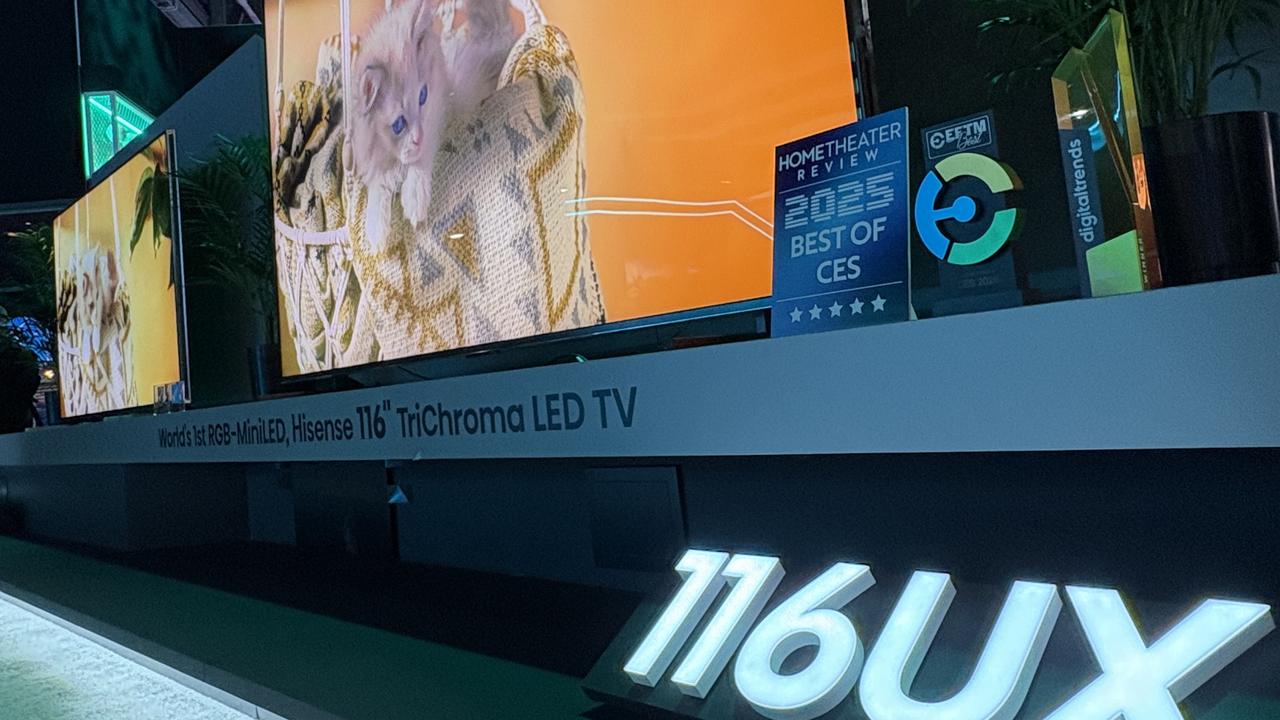CES 2020: LG showcases disappearing TV
Why buy, say, two utes when you could put down almost $90k on a single TV? LG reckons once you see its fancy new telly you’ll do just that.

Unless you’re one of those weirdos who won’t shut up about the fact they don’t have one, chances are you have at least one television in your house.
It may transport you to breaking news events across the globe, give you a front-row seat to a major sporting event, or merely distract you from your own life; but when it’s turned off the increasingly large slates become a looming abyss that merely reflects back at you the furniture you point towards it.
Some have tried to cut out this constant presence by opting for a projector that turns a bare wall into their television, provided you have the right lighting conditions.
Others have opted for wall mounting their television to provide a gallery like experience. Some companies have got on board with this by producing “gallery-style” televisions, thin panels designed to be stuck on your wall.
At the Consumer Electronics Show (CES) in Las Vegas this week, big brands have been unveiling high concept TVs designed to convince you that aren’t really there at all.
And one such model, from LG, will set you back a cool $86,000. For that price you could buy a couple of Toyota utes.
Competitor Samsung has a range of “lifestyle televisions” with appeal — there’s the millennial targeting, smartphone mirroring, rotating Sero set, and the part-TV part-sculpture Serif. Both give consumers an option to camouflage their television if not conceal it.
The Seroes and its Frame series aim to make televisions less obtrusive.

One other way the company is working on making you ignore its products when you aren’t actually using them includes an ambient mode feature to show digital reproductions of famous artworks that can put the Louvre in your living room.
LG’s GX Gallery TV, a 20 millimetre-thick panel that includes recessed paths for cables, allowing the screen to sit flush against your wall, is another.
The new models have managed to pack all the electronics and speakers into the actual panel, where previous models relied on a separate box.
As is the latest craze, it’s also got far field microphones for voice commands, allowing you to do things like tell it to turn off.
This could prove a divisive feature for those wary of putting microphones in their home, as well as for those who like to be in sole control of the remote, but it also provides a powerful tool for parents who can’t get their children to step away from the television.
The new GX Gallery will be available in 55-inch, 65-inch, and 77-inch sizes, with 4K UHD resolution.
The company also has the WX Wallpaper series, available in 65-inch and 77-inch.

TV THAT ROLLS UP
The Korean manufacturer has now gone one step further, with a rollable television that disappears completely into its base unit.
The LG Signature OLED R is part of the brand’s premium-tier Signature range.
In essence it relies on the same flexible OLED panels being used in the emerging crop of foldable smartphones.
The magic of this set is it doesn’t try to merely camouflage itself, it literally hides away, leaving you with a sleek rectangular prism similar to an entertainment unit when not in use.
LG showed off the rollable television at CES 2019. It had hoped to start shipping last year but that time frame slipped. A revised model was back again this year and LG representatives are now confident it might actually hit the market in 2020.
You’ll have to roll out a few banknotes for you new rollable TV. In the US it will cost $US60,000, more than $86,000 in our money.
The new design has the ability to unroll from the ceiling as well, a feature that wasn’t available on earlier models shown at CES last year.
These art-inspired sets have taken over from a market formerly dominated by European companies like Loewe and Bang and Olufsen, so much so that Loewe blamed the Korean companies for its decision to go into administration in June last year.

It also blamed unionised workers and the German insolvency laws that make it illegal for the company to continue trading when it can’t afford to pay them.
LG’s rollable television is an undoubtedly exciting piece of technology, and offers a luxurious and stylish glimpse of the future, as tech shows like CES aim to do.
But if you’re the type to want your television to disappear, you’re going to want to be similarly inclined about your money.
Pricing is yet to be confirmed but the current thinking is that the rollable television will cost in the upper tens of thousands of dollars, potentially commanding the same price as a luxury car.
When or even if you’ll be able to buy one in Australia, and how much it will cost, is still to be confirmed, so at least you’ve got some time to start saving.
Is hiding your television enough to make you want to spend such a wild amount? Let us know what you think in the comments below.
The reporter travelled to Las Vegas as a guest of LG.



